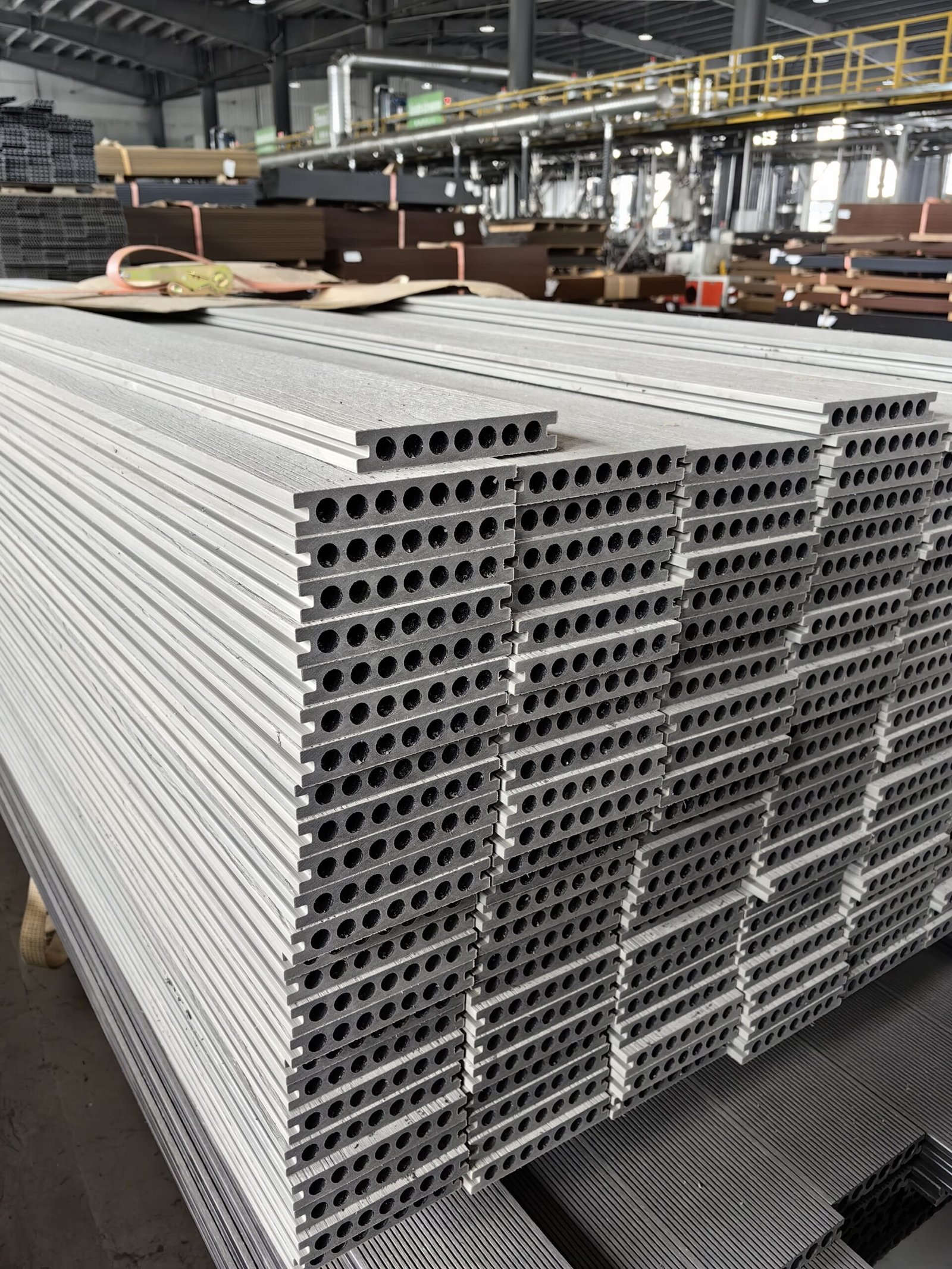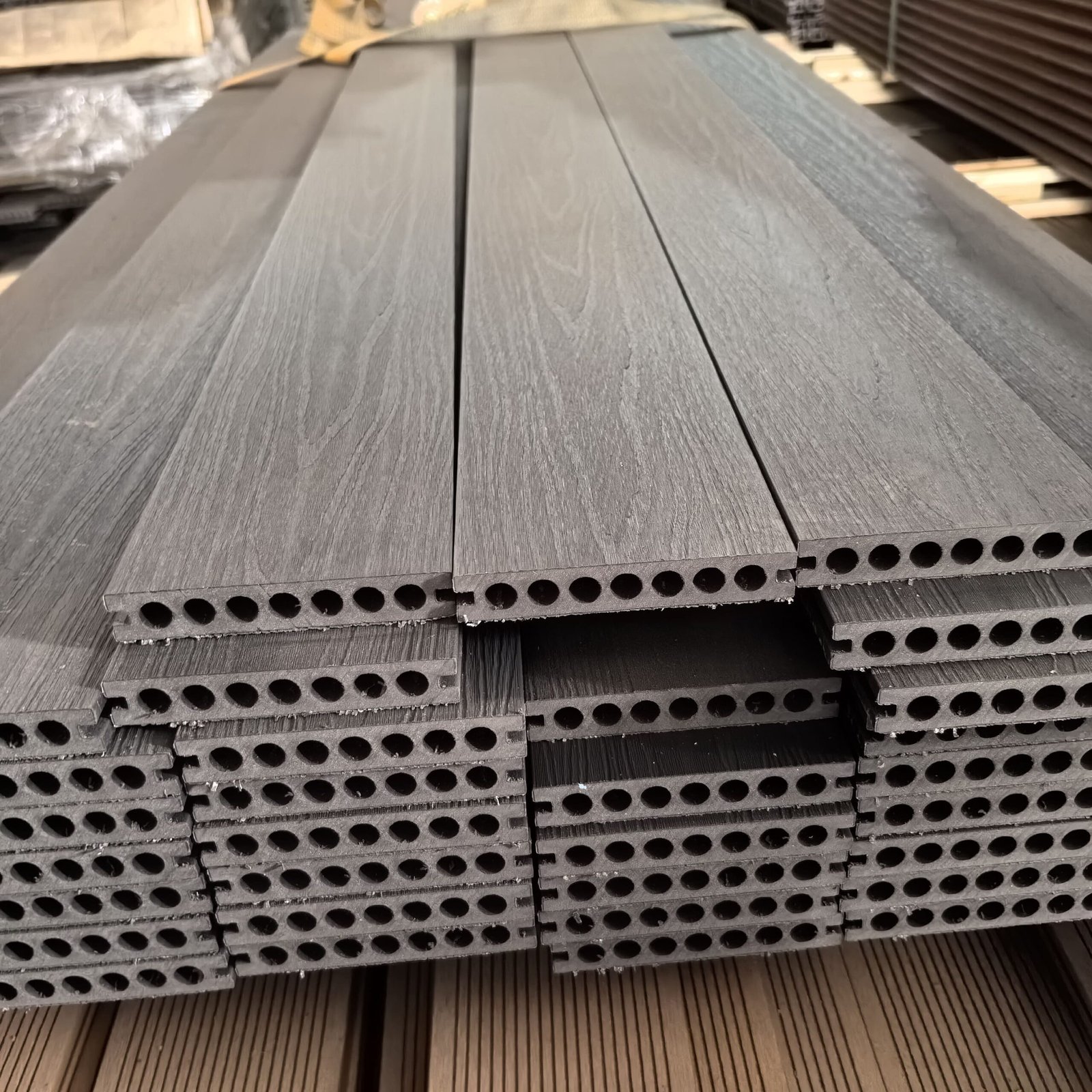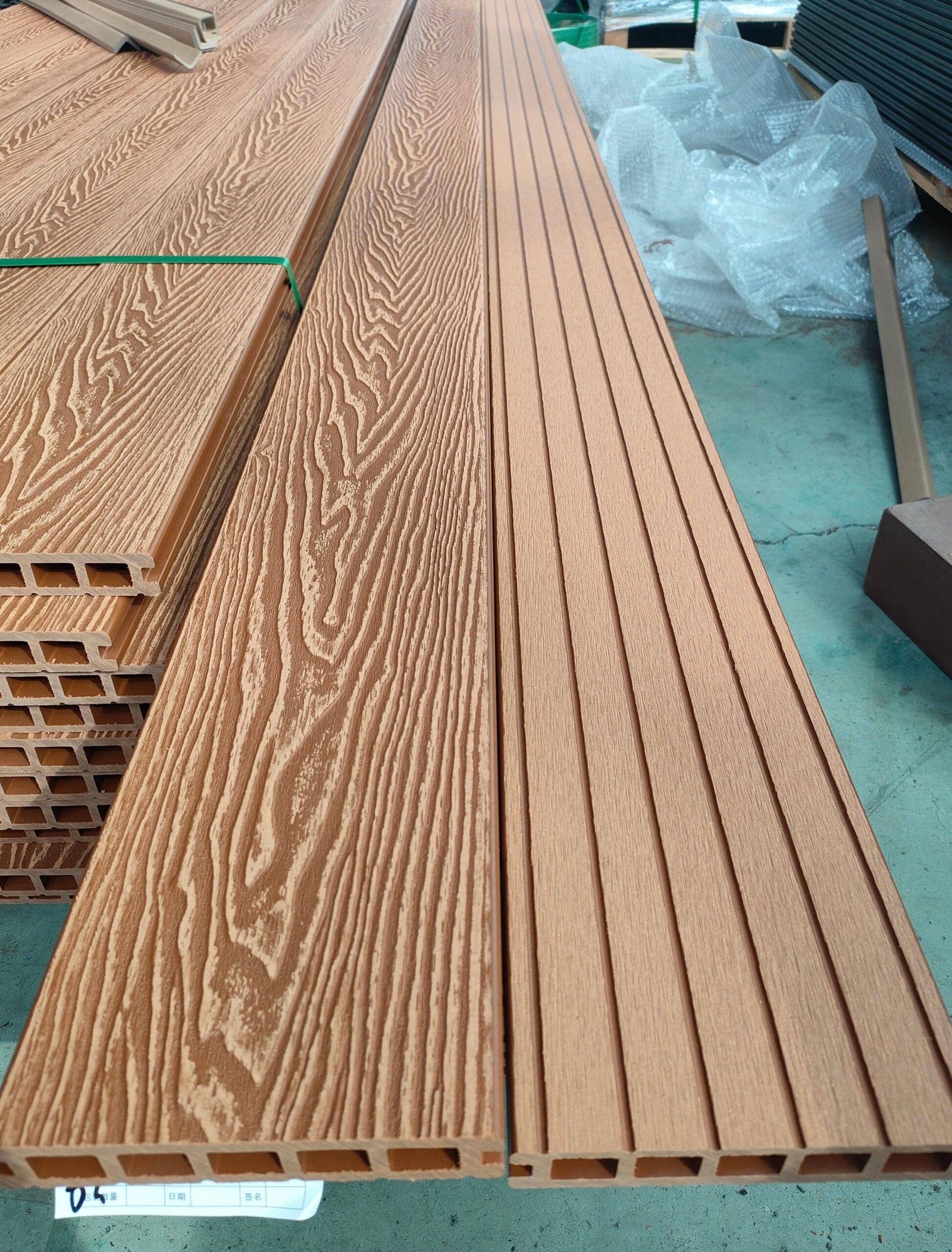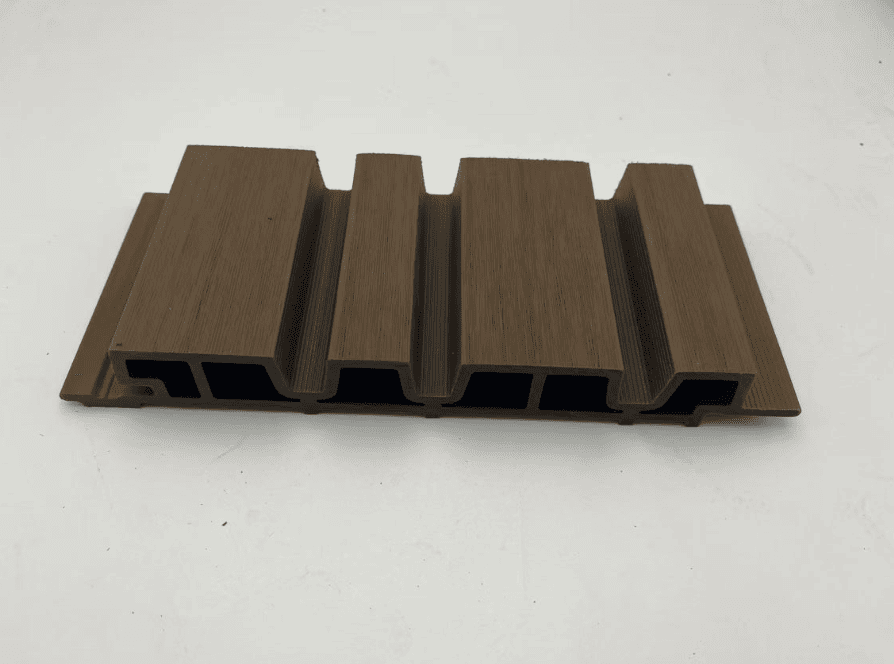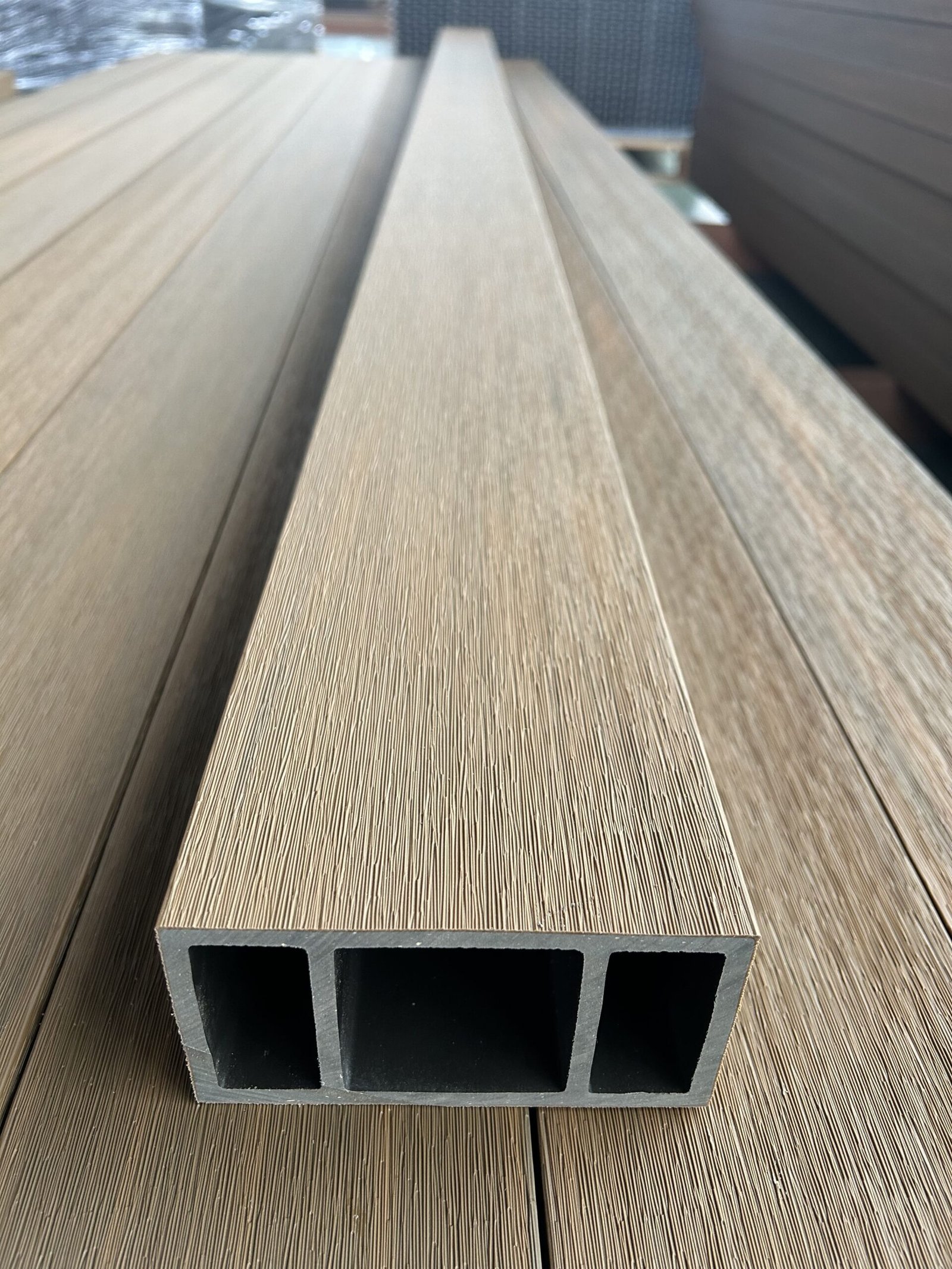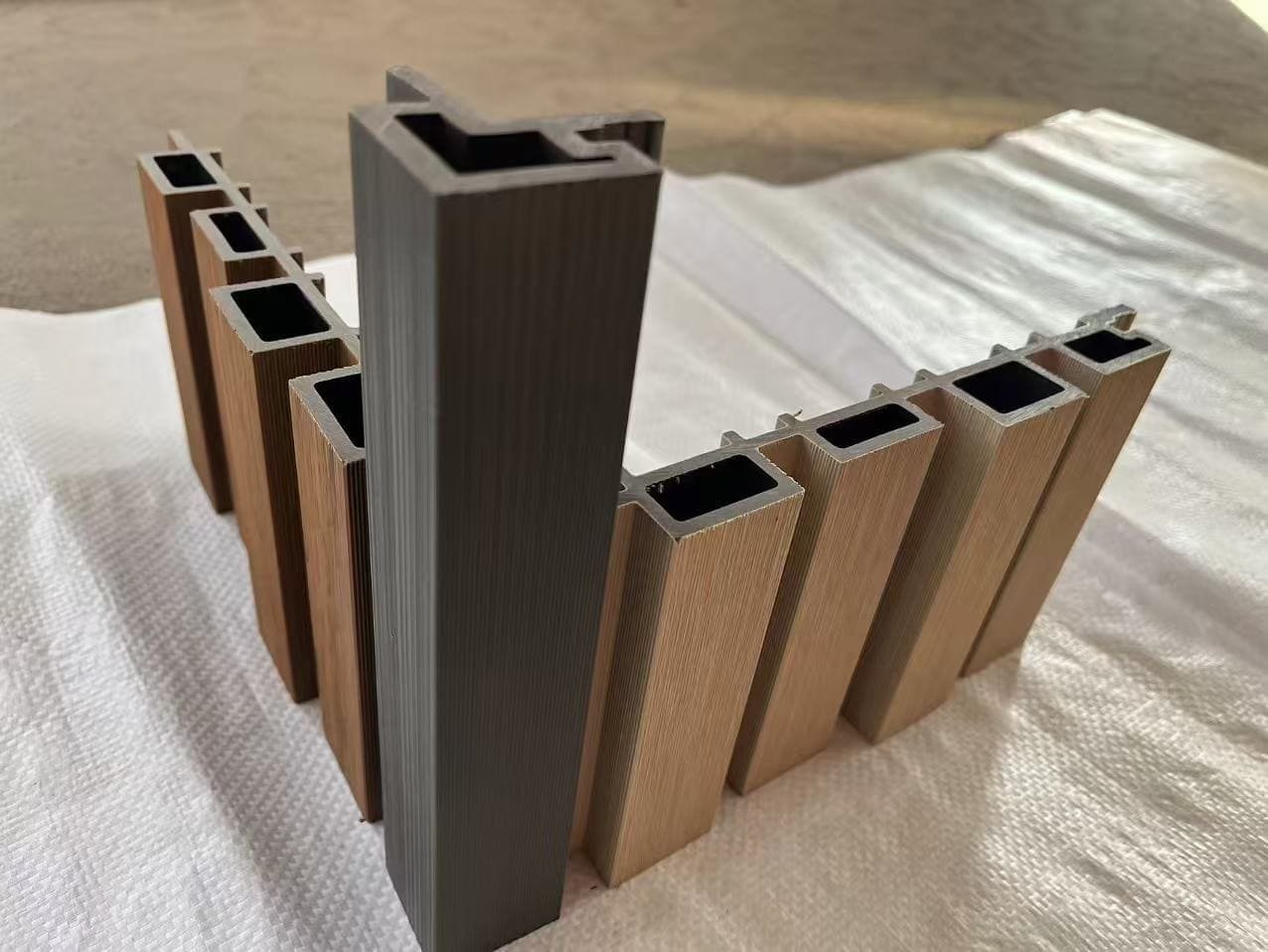PANEL WPC PARA EXTERIORES
Estos paneles combinan fibras de madera y plástico para crear un material altamente durable frente a los elementos exteriores. Resistentes a la pudrición y a los insectos, ofrecen una excelente alternativa a la madera natural en proyectos de decoración exterior y paisajismo. Su fácil mantenimiento y larga vida útil los convierten en una opción preferida en muchas aplicaciones al aire libre. Además, los paneles WPC están diseñados para soportar la exposición a los rayos UV, reduciendo el riesgo de decoloración y manteniendo su apariencia con el tiempo. Esto los hace especialmente adecuados para climas con intensa luz solar o lluvias frecuentes. En general, las instalaciones exteriores se benefician de la estabilidad y resistencia del material, asegurando una inversión duradera.
El material compuesto es ideal para superficies exteriores gracias a su resistencia a la humedad y a los rayos UV. Ofrece la calidez y textura de la madera, pero requiere menos mantenimiento. Ampliamente utilizado en viviendas y edificios comerciales, protege las paredes mientras mejora el atractivo exterior. El revestimiento exterior de paredes WPC también proporciona excelentes propiedades de aislamiento, ayudando a regular la temperatura interior y a reducir los costos energéticos. Además, su resistencia al moho y a la humedad lo convierte en una opción higiénica para ambientes húmedos. Los métodos de instalación sencillos y su compatibilidad con diversos estilos arquitectónicos contribuyen a su creciente popularidad en el diseño exterior.
Este material para tarimas repele eficazmente el agua, evitando problemas como la hinchazón o la pudrición que suelen afectar a la madera natural. Aunque no es completamente impermeable, funciona bien en ambientes húmedos como alrededor de piscinas y patios exteriores, lo que lo convierte en una opción práctica para garantizar durabilidad y seguridad. La naturaleza compuesta de la tarima WPC también le confiere resistencia a las manchas y al deslizamiento, proporcionando superficies más seguras en condiciones húmedas. Además, su baja porosidad limita la absorción de agua, lo que prolonga la integridad estructural del material tras años de exposición. Normalmente, una limpieza regular es suficiente para mantener su atractivo estético.
Algunas limitaciones incluyen un costo inicial más alto en comparación con las vallas de madera tradicionales. También puede experimentar una ligera expansión o cambios de color bajo condiciones climáticas extremas. Una instalación adecuada y un cuidado periódico son importantes para mantener su apariencia intacta. Además, aunque el WPC es más resistente a los insectos, no es completamente inmune a daños por impactos fuertes o cargas pesadas. Con el tiempo, pueden aparecer pequeños rayones o abolladuras en la superficie, lo que puede afectar su aspecto visual. Comprender estos factores ayuda a los usuarios a planificar el mantenimiento y garantizar la satisfacción a largo plazo.
Aunque son duraderos y de bajo mantenimiento, estos paneles pueden ser a veces más pesados que las alternativas de madera, lo que dificulta un poco la instalación. El contenido plástico también genera preocupaciones ambientales para algunos consumidores. Sin embargo, su resistencia al clima y a las plagas suele superar estas desventajas. Además, el proceso de fabricación de los paneles de valla WPC puede variar, por lo que existen diferencias de calidad entre marcas. Elegir fabricantes y proveedores reputados puede reducir riesgos relacionados con defectos del material o desgaste prematuro. En resumen, sopesar estas desventajas frente a los beneficios es clave para tomar decisiones de compra informadas.

